#Fleet Management Software and Maintenance System
Explore tagged Tumblr posts
Text
2 notes
·
View notes
Text
You Can Lower Insurance Rates by using Technology
If you’re an independent trucker, you know insurance premiums can really cut into your bottom line. But there are actually ways to bring those rates down, and a lot of it has to do with the technology you invest in. Let’s talk about a few strategies that can make a real difference in lowering your insurance costs. One of the best tools out there for saving on premiums is telematics. These…
#ADAS for truckers#affordable truck insurance#collision avoidance systems#fleet management software#how to lower truck insurance#independent trucker insurance#insurance discounts for truckers#insurance savings trucking#lower truck insurance#pay-as-you-drive insurance#reducing truck insurance premiums#safe driving habits truckers#safe truck driving technology#telematics for truckers#telematics insurance benefits#truck cybersecurity#Truck Insurance Costs#truck insurance discounts#truck insurance technology#truck maintenance tips#trucker insurance savings#trucking insurance tips#trucking safety technology#usage-based insurance for truckers
1 note
·
View note
Text
#cmms software#digital assets#asset management#software to track assets#digital asset management companies#asset lifecycle management software#asset life tracking software#cloud based asset management system#Fleet Management Software#Maintenance Management Software#order management software#order management software for small business#inventory tracking system for small business
1 note
·
View note
Text
Check out our portfolio of vehicle tracking and management solutions that we developed for WHB Farms. WHB Farms couldn't manage its fleet with more than 2000 vehicles including trucks, trailers, and autos. Therefore, we developed personalized vehicle management software that lets them monitor vehicles, manage insurance, fuel reports, and data-driven insights and is packed with other essential features that you can know by looking at our portfolio.
#fleet management#fleet maintenance#fleet management system development#logistics software development#online fleet management system
0 notes
Text
Fleet management software is a technology-driven solution designed to help businesses manage, track, and optimize their fleet of vehicles efficiently. It comprises a range of functionalities, including vehicle tracking, maintenance scheduling, fuel management, compliance monitoring, and more.
#FleetManagementSoftware#CustomSoftwareDevelopment#FleetManagementApp#vehicle fleet maintenance app#vehicle fleet management software#fleet monitoring systems
0 notes
Text
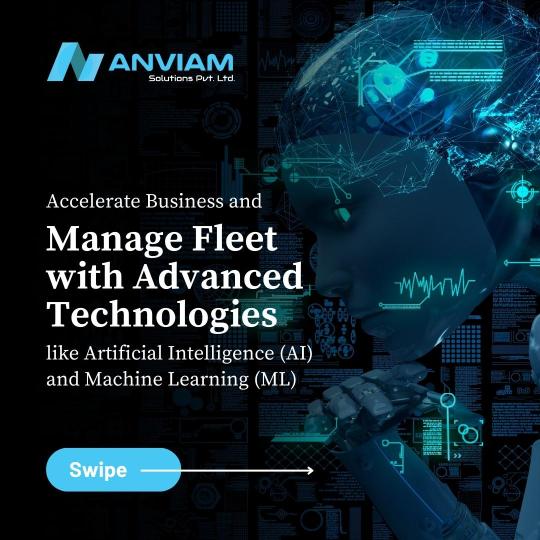
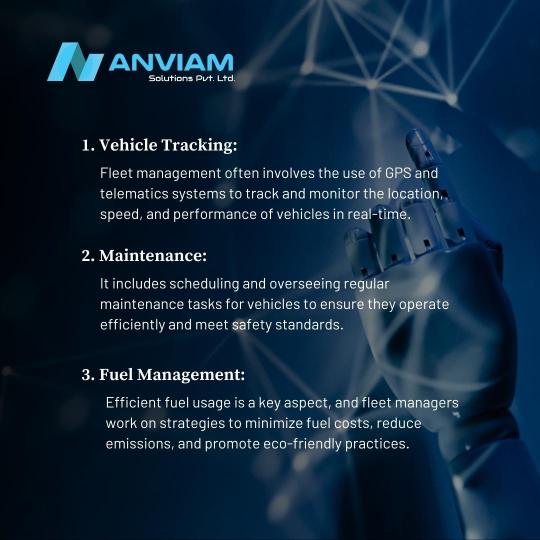
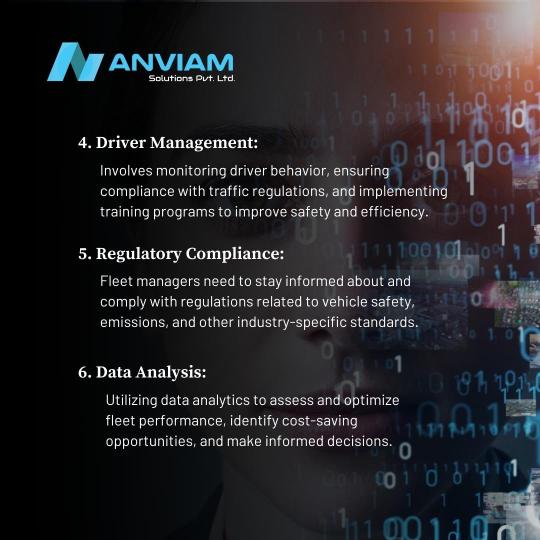

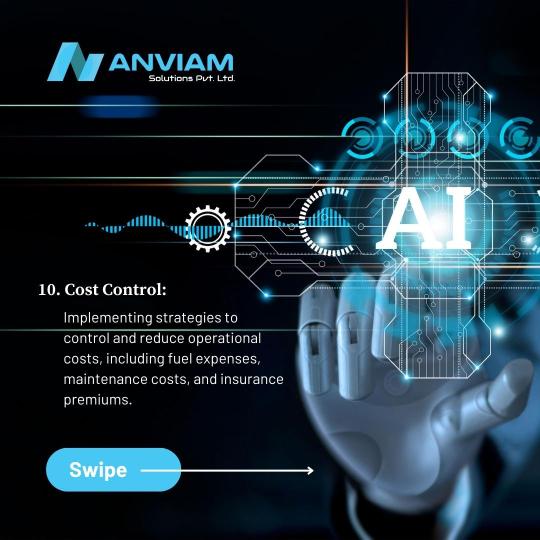

Accelerate Business and Manage Fleet with Advanced Technologies like Artificial Intelligence (AI) and Machine Learning (ML) : ➢ Vehicle Tracking ➢ Maintenance ➢ Fuel Management ➢ Driver Management ➢ Regulatory Compliance ➢ Data Analysis ➢ Asset Utilization ➢ Technology Integration ➢ Risk Management ➢ Cost Control Fleet management plays a crucial role in various industries where a fleet of vehicles is an integral part of daily operations, such as logistics, transportation, delivery services, and more. Contact us : 📞 +91-8360176682, +91-8054217664 🌐 www.anviam.com 📩 [email protected]
#fleet management#fleetmaintenance#anviamsolutions#anviam#objectives#software company#software development#app development#app design#app developing company#web design#webdevelopment#high maintenance#tracking software#tracking system#asset finance#fuel management system#fleet tracking#trending2023#digitalmarketing#business#blockchain#data analysis
0 notes
Text
Edge Computing Market Disruption: 7 Startups to Watch

Edge Computing Market Valuation and Projections
The global edge computing market is undergoing a transformative evolution, with projections estimating an edge computing market size escalation from USD 15.96 billion in 2023 to approximately USD 216.76 billion by 2031, marking a compound annual growth rate (CAGR) of 33.6%. This unprecedented trajectory is being driven by rising demand for real-time data processing, the proliferation of Internet of Things (IoT) devices, and the deployment of 5G infrastructure worldwide.
Request Sample Report PDF (including TOC, Graphs & Tables): https://www.statsandresearch.com/request-sample/40540-global-edge-computing-market
Accelerated Demand for Real-Time Data Processing
Edge computing is revolutionizing the digital ecosystem by decentralizing data processing, shifting it from core data centers to the edge of the network—closer to the point of data generation. This architectural transformation is enabling instantaneous insights, reduced latency, and optimized bandwidth usage, which are critical in sectors requiring rapid decision-making.
Industries such as automotive, healthcare, telecommunications, and manufacturing are leading adopters of edge technologies to empower smart operations, autonomous functionality, and predictive systems.
Get up to 30%-40% Discount: https://www.statsandresearch.com/check-discount/40540-global-edge-computing-market
Edge Computing Market Segmentation Analysis:
By Component
Hardware
Edge computing hardware includes edge nodes, routers, micro data centers, servers, and networking gear. These devices are designed to endure harsh environmental conditions while delivering low-latency data processing capabilities. Companies are investing in high-performance edge servers equipped with AI accelerators to support intelligent workloads at the edge.
Software
Software solutions in edge environments include container orchestration tools, real-time analytics engines, AI inference models, and security frameworks. These tools enable seamless integration with cloud systems and support distributed data management, orchestration, and real-time insight generation.
Services
Edge services encompass consulting, deployment, integration, support, and maintenance. With businesses adopting hybrid cloud strategies, service providers are essential for ensuring compatibility, uptime, and scalability of edge deployments.
By Application
Industrial Internet of Things (IIoT)
Edge computing plays a vital role in smart manufacturing and Industry 4.0 initiatives. It facilitates predictive maintenance, asset tracking, process automation, and remote monitoring, ensuring enhanced efficiency and minimized downtime.
Smart Cities
Municipalities are leveraging edge computing to power traffic control systems, surveillance networks, waste management, and public safety infrastructure, enabling scalable and responsive urban development.
Content Delivery
In media and entertainment, edge solutions ensure low-latency content streaming, localized data caching, and real-time audience analytics, thereby optimizing user experience and reducing network congestion.
Remote Monitoring
Critical infrastructure sectors, including energy and utilities, employ edge computing for pipeline monitoring, grid analytics, and remote equipment diagnostics, allowing for proactive threat identification and response.
By Industry Vertical
Manufacturing
Edge solutions in manufacturing contribute to real-time production analytics, defect detection, and logistics automation. With AI-powered edge devices, factories are becoming increasingly autonomous and intelligent.
Healthcare
Hospitals and clinics implement edge computing to support real-time patient monitoring, diagnostic imaging processing, and point-of-care data analysis, enhancing treatment accuracy and responsiveness.
Transportation
The sector is utilizing edge technology in autonomous vehicle systems, smart fleet tracking, and intelligent traffic signals. These systems demand ultra-low latency data processing to function safely and efficiently.
Energy & Utilities
Edge computing enables smart grid optimization, renewable energy integration, and predictive fault detection, allowing utilities to manage resources with greater precision and sustainability.
Retail & Others
Retailers deploy edge devices for personalized marketing, real-time inventory management, and customer behavior analysis, enabling hyper-personalized and responsive shopping experiences.
Key Drivers Behind Edge Computing Market Growth:
1. IoT Proliferation and Data Deluge
With billions of connected devices transmitting real-time data, traditional cloud architectures cannot meet the bandwidth and latency demands. Edge computing solves this by processing data locally, eliminating unnecessary round trips to the cloud.
2. 5G Deployment
5G networks offer ultra-low latency and high throughput, both essential for edge applications. The synergy between 5G and edge computing is pivotal for real-time services like AR/VR, telemedicine, and autonomous navigation.
3. Hybrid and Multi-Cloud Strategies
Enterprises are embracing decentralized IT environments. Edge computing integrates with cloud-native applications to form hybrid infrastructures, offering agility, security, and location-specific computing.
4. Demand for Enhanced Security and Compliance
By localizing sensitive data processing, edge computing reduces exposure to cyber threats and supports data sovereignty in regulated industries like finance and healthcare.
Competitive Landscape
Leading Players Shaping the Edge Computing Market
Amazon Web Services (AWS) – Offers AWS Wavelength and Snowball Edge for low-latency, high-performance edge computing.
Microsoft Azure – Delivers Azure Stack Edge and Azure Percept for AI-powered edge analytics.
Google Cloud – Provides Anthos and Edge TPU for scalable, intelligent edge infrastructure.
IBM – Offers edge-enabled Red Hat OpenShift and hybrid edge computing solutions for enterprise deployment.
NVIDIA – Powers edge AI workloads with Jetson and EGX platforms.
Cisco Systems – Delivers Fog Computing and edge networking solutions tailored to enterprise-grade environments.
Dell Technologies – Supplies ruggedized edge gateways and scalable edge data center modules.
Hewlett Packard Enterprise (HPE) – Delivers HPE Edgeline and GreenLake edge services for data-intensive use cases.
FogHorn Systems & EdgeConneX – Innovators specializing in industrial edge analytics and data center edge infrastructure respectively.
Edge Computing Market Regional Insights
North America
A mature digital infrastructure, coupled with high IoT adoption and strong cloud vendor presence, makes North America the dominant regional edge computing market.
Asia-Pacific
Driven by rapid urbanization, smart city initiatives, and industrial automation in China, India, and Japan, Asia-Pacific is projected to experience the fastest CAGR during the forecast period.
Europe
The region benefits from strong government mandates around data localization, Industry 4.0 initiatives, and investments in telecom infrastructure.
Middle East and Africa
Emerging adoption is evident in smart energy systems, oilfield monitoring, and urban digital transformation projects.
South America
Growth in agritech, mining automation, and public safety systems is propelling the edge market in Brazil, Chile, and Argentina.
Purchase Exclusive Report: https://www.statsandresearch.com/enquire-before/40540-global-edge-computing-market
Edge Computing Market Outlook and Conclusion
Edge computing is not just an enabler but a strategic imperative for digital transformation in modern enterprises. As we move deeper into an AI-driven and hyperconnected world, the integration of edge computing with 5G, IoT, AI, and cloud ecosystems will redefine data management paradigms.
Businesses investing in edge infrastructure today are setting the foundation for resilient, intelligent, and real-time operations that will determine industry leadership in the years ahead. The edge is not the future—it is the present frontier of competitive advantage.
Our Services:
On-Demand Reports: https://www.statsandresearch.com/on-demand-reports
Subscription Plans: https://www.statsandresearch.com/subscription-plans
Consulting Services: https://www.statsandresearch.com/consulting-services
ESG Solutions: https://www.statsandresearch.com/esg-solutions
Contact Us:
Stats and Research
Email: [email protected]
Phone: +91 8530698844
Website: https://www.statsandresearch.com
1 note
·
View note
Text
As a trucker, you can perform various tasks within truck dispatching:
*Primary Responsibilities:*
1. Receive and accept load assignments from dispatchers.
2. Review load details, routes, and schedules.
3. Plan and navigate routes using GPS and maps.
4. Manage cargo, including loading/unloading and securement.
5. Comply with safety regulations, hours of service, and company policies.
6. Communicate with dispatchers, shippers, and receivers.
7. Update dispatchers on shipment status and any issues.
*Additional Tasks:*
1. Pre-trip inspections: ensure vehicle safety and compliance.
2. Fuel management: optimize fuel efficiency and costs.
3. Maintenance scheduling: coordinate vehicle maintenance.
4. Logkeeping: maintain accurate records of hours, miles, and cargo.
5. Customer service: interact with shippers, receivers, and brokers.
6. Route optimization: suggest alternative routes or improvements.
7. Load optimization: maximize cargo capacity and revenue.
*Technology Used:*
1. Electronic Logging Devices (ELDs)
2. GPS tracking systems
3. Mobile apps (e.g., Trucker Path, TruckStop)
4. Fleet management software (e.g., TMW, McLeod)
5. Communication platforms (e.g., phone, email, messaging apps)
*Skills Required:*
1. Knowledge of transportation regulations
2. Navigation and route-planning skills
3. Time management and organization
4. Communication and customer service skills
5. Mechanical knowledge of trucks and equipment
6. Adaptability and problem-solving
7. Attention to detail and safety protocols
*Career Advancements:*
1. Lead driver or mentor
2. Fleet manager
3. Safety inspector
4. Dispatch coordinator
5. Logistics manager
6. Owner-operator or small fleet owner
7. Transportation consultant
*Benefits:*
1. Competitive pay and benefits
2. Job security and stability
3. Opportunities for advancement
4. Independence on the road
5. Variety in routes and cargo
6. Sense of accomplishment and satisfaction
Would you like more information on:
1. Trucking regulations
2. Dispatching software
3. Career development
4. Safety protocols
5. Something else
Let me know!
2 notes
·
View notes
Text
Is Over-the-Air (OTA) Software Update the Future of Car Maintenance?
In today’s fast-paced automotive world, technology is evolving faster than ever, and Over-the-Air (OTA) software updates are emerging as a key player in car maintenance. These updates are designed to keep your car running smoothly and efficiently, without the need for a visit to the car repair shop. But is this truly the future of car maintenance, or is it just a passing trend? Let’s explore the role of OTA software updates in modern vehicle care and what they mean for car owners.
What is an Over-the-Air (OTA) Software Update?
Over-the-Air (OTA) software updates are similar to the updates your smartphone receives periodically, but instead of updating apps or operating systems, these updates are sent to your vehicle’s onboard computer systems. These updates can fix software bugs, improve vehicle performance, update navigation maps, and even enhance certain features like air conditioning services or engine diagnostics. OTA updates are revolutionizing car maintenance, as they allow drivers to maintain and improve their cars without ever leaving their driveway.

The Convenience Factor
One of the biggest selling points of OTA updates is convenience. Imagine you’re due for a routine engine tune-up or a brake flush at your car repair shop, but instead of scheduling an appointment and driving to the garage, you simply receive an update that optimizes your car’s engine performance or fixes issues like a malfunctioning AC or engine light indicator.
In addition to engine diagnostics and brake pad replacements, these updates can adjust everything from fuel injection cleaning to high purity nitrogen tire inflation without you lifting a finger. With mobile car repair services gaining popularity, OTA updates are a natural extension of this on-demand service model, offering an added layer of convenience and efficiency.
Regular Maintenance, Made Easier
While OTA updates won’t replace all aspects of traditional car maintenance, they can significantly reduce the need for frequent trips to the repair shop for minor issues. For example, with an engine oil update or even a timing belt alert, your car could notify you when it’s time for oil change services or when there’s an issue with the suspension or shocks and struts. With such notifications, you can stay on top of regular maintenance and keep your vehicle in optimal condition.
Furthermore, OTA updates could revolutionize the way fleet maintenance is managed, particularly for businesses with a large number of vehicles. Instead of waiting for brake line repairs or serpentine belt repairs, fleet managers can ensure that every vehicle receives the necessary updates remotely, saving time and costs associated with auto brake repair services and suspension repairs.
Does OTA Replace Hands-On Car Repair Services?
While OTA updates offer convenience and efficiency, they are not designed to replace the need for traditional car repair services. Certain mechanical repairs, like car body repair, windshield wiper replacement, or issues related to car tires (such as tire rotation and balance or car tire repair) require physical intervention. You will still need a trusted car repair shop for comprehensive brake services, suspension system repairs, and major mechanical issues like transmission services and fuel filter services.

Some issues—like radiator flush service, battery maintenance, or power steering services—are better handled in-person with the assistance of professional mechanics using advanced diagnostic tools. While OTA updates can enhance certain aspects of your vehicle, they cannot address every type of mechanical failure or system malfunction that requires hands-on attention.
Benefits of OTA Updates for Car Maintenance
Improved Vehicle Performance: Regular software updates can boost the efficiency of your vehicle’s onboard systems, including fuel efficiency, engine performance, and air conditioning service. This ensures that your car runs smoother and requires fewer in-person visits to the repair shop.
Real-Time Alerts: With OTA updates, cars can send real-time notifications about potential issues, such as a check engine light or a need for brake pad replacement. This helps you stay ahead of mechanical problems, preventing them from turning into costly repairs.
Cost Savings: OTA updates could ultimately save you money by reducing the need for frequent oil change services, wheel alignment, or brake repair visits. Since the car fixes itself remotely, you only visit the car repair shop when necessary.
Customization of Vehicle Settings: Some vehicles offer OTA updates that allow owners to customize settings like wiper blade replacement or even the way the car engine works, depending on driving preferences.
The Future of OTA and Car Maintenance
As automakers continue to invest in advanced technology, the role of OTA software updates in vehicle maintenance will likely grow. The increasing connectivity between vehicles and software platforms means that drivers will have more control over their vehicle’s maintenance. Fleet owners, in particular, will benefit from full-service oil change updates or automatic car transmission services sent directly to their vehicle’s system, without needing to book separate appointments.
However, there is still the need for physical inspections and repairs. Mobile car repair services, car auto repair services, and car glass repair services will remain an essential part of car maintenance in the foreseeable future.
Is OTA the Future?
While Over-the-Air updates are a promising addition to the automotive world, they won’t entirely replace traditional car repair and maintenance services. Instead, they complement the ongoing need for regular inspections and hands-on repairs, offering both convenience and efficiency. As technology continues to advance, the future of car maintenance will likely be a hybrid model, where OTA updates help maintain the vehicle, but car repair shops still play a vital role in ensuring safety and performance.
Stay informed, and make sure your car stays in top shape with a blend of engine diagnostics, mobile car repair services, and regular maintenance. After all, maintaining your car is all about being proactive with both cutting-edge technology and trusted expertise.
1 note
·
View note
Text
How To Choose The Right Telematics Software Solution For Your Fleet?

Telematics is a combination of telecommunication and informatics that provides real-time information about vehicles through GPS systems, sensors, and onboard diagnostics. The telematics software solution provides many benefits including improved productivity, reduced costs, increased safety, enhanced customer service, and better compliance.
This article will provide a comprehensive outlook on what to look for and how to pick the perfect telematics software for your fleet, supported by its features.
Tips to Choose the Best Telematics Software Solution
At its most basic level, a telematics system consists of a vehicle tracking device installed in a vehicle that allows the sending, receiving, and storing of telemetry data in real time. This data is processed and then sent to end-users over a network.
Telematics systems can provide real-time data about vehicle location, fuel usage, speed, idle time, and driving behavior, all of which can play crucial roles in fleet management. This information can be invaluable for improving efficiency, and productivity, reducing operational costs, and ensuring the safety of drivers.
Selecting a suitable telematics system for a fleet-dependent business with these tips.
Consider Your Requirements
For starters, you need to understand what you need from a telematics system. Are you focused on tracking location only? Or are you also interested in managing fuel efficiency, driver behavior, and fleet maintenance?
Features
When you know what you need, start evaluating different software. Go for the features that meet your fleet operations. Some might have features you don't currently need but could be useful in the future, providing room for growth.
Provider Reputation
Consider providers that have a robust track record and are known for excellent customer service.
Cost
While not always the top priority, cost is always a significant consideration. Consider the total cost including purchase, installation, and ongoing monthly or yearly service fees. Ensure that all the features you need are included in the price, rather than as pricey add-ons.
Integration
A telematics solution should be able to integrate with your existing systems.
Test Drive
If possible, give the software a test run before buying it and integrating it into your vehicle.
Customized
Every business has unique needs, and your telematics software should be able to cater to these. Also, look for a custom telematics software solution that is flexible to meet your current and future goals.
Customer Support
Look for a provider with responsive customer support, particularly if you’re new to telematics.
Read Blog : Maximize Your Fleet Safety with Video Telematics Solutions
Features Provided By the Vehicle Telematics Solutions
As we know telematics uses GPS technology to collect data on various aspects of a vehicle's performance.
This data, ranging from speed and fuel consumption to engine diagnostics and driver behavior, is then sent via a telecommunications network to a server where it can be assessed using telematics software.
Video telematics, on the other hand, adds the functioning of video recording to telematics devices. The video telematics system, therefore, also captures visual data while the vehicle is in motion, providing a more comprehensive view of the road and driver behavior.
1) Fleet Optimization: With reliable data on vehicle performance and driver behavior, companies can improve fleet efficiency. For instance, companies can plan optimal routes to reduce fuel consumption or ensure that deliveries are made on time.
2) Vehicle Maintenance: Telematics data also aids in detecting vehicle maintenance needs timely. It can notify the fleet manager when vehicles are due for service, or when parts need replacement, thereby minimizing unexpected and costly breakdowns.
3) Driver Behavior Monitoring: Video telematics, particularly, comes in handy in providing real-time telematics insights into driver behaviors like speeding, harsh braking, or using a cell phone while driving. This data can be used to provide feedback to drivers, thereby improving safety.
4) Real-Time Tracking: This allows fleet managers to track the location of their vehicles in real-time, which can help ensure drivers are following the planned routes and sticking to their schedules. It can also aid in the recovery of stolen vehicles.
5) Maintenance and Diagnostics: OBD-II telematics can provide comprehensive vehicle diagnostic reports, helping prevent breakdowns and unnecessary wear and tear by alerting fleet managers to any needed repairs or maintenance.
6) Fuel Management: The software can monitor and record fuel consumption, helping identify inefficient vehicles or potential fuel theft.
Wrap Up!
Selecting the right telematics software requires careful consideration and a clear understanding of your fleet's needs. Importantly, it should help streamline your operations, improve productivity, and ultimately, increase your profits.
Always try before you buy, check on reliability, and ensure what is promised is delivered. Regularly reviewing your needs and the performance of your existing telematics platform is also important in keeping your software up-to-date and beneficial for your fleet.
So, why not give it a try at TrackoBit? Hurry, and contact us now!
Source : How To Choose The Right Telematics Software Solution For Your Fleet?
2 notes
·
View notes
Text
How to Use Maintenance Software to Prevent Equipment Downtime
Equipment downtime is a significant hurdle in construction operations. Unexpected breakdowns can grind projects to a halt, leading to delayed timelines, escalated costs, and disrupted workflows.
In the construction world, minimizing Downtime isn't just a goal it's necessary to maintain productivity and profitability. A well-maintained fleet is the backbone of efficient project execution, and this is where construction equipment maintenance software comes into play.
By proactively managing maintenance through specialized software, companies can drastically reduce equipment downtime and extend the lifespan of their machinery.
This post will explore how to use maintenance software to transition from reactive to preventive maintenance, automate schedules, monitor equipment in real-time, and leverage data-driven insights to boost operations. The results? Increased efficiency, less Downtime, and more profitability.
How Maintenance Software Reduces Equipment Downtime
1.1. Transition from Reactive to Preventive Maintenance
Traditionally, equipment maintenance has been reactive: fix it when it breaks. However, this approach costs time and money, especially in the construction industry, where project delays can result in hefty penalties.
Reactive maintenance tends to increase the chances of complete equipment failure, leading to prolonged Downtime. The alternative is preventive maintenance, which involves identifying issues before they escalate.
Maintenance software is the game-changer that facilitates this transition. It allows you to adopt a proactive approach, where the system monitors equipment performance and sends early warnings when something isn't quite right.
This early detection is vital, preventing minor issues from ballooning into costly breakdowns. The transition from reactive to preventive maintenance has reduced equipment downtime by up to 30%, safeguarding your bottom line and project deadlines.
1.2. Automation of Maintenance Schedules
One of the most impactful features of construction equipment maintenance software is its ability to automate maintenance schedules.
Consistency is vital regarding equipment health, and automation ensures that routine inspections and necessary upkeep are always noticed. Maintenance tasks can be scheduled well in advance, eliminating the risks of human error or forgetfulness.
With automated scheduling, companies can inspect their equipment regularly, reducing the chances of unexpected breakdowns. The software provides timely reminders for essential maintenance tasks, keeping your fleet in optimal condition. This can lead to a 25% increase in equipment uptime, translating into fewer costly delays.
Real-Time Equipment Monitoring and Alerts
2.1. Real-Time Data Collection and Analysis
Modern construction equipment maintenance software offers real-time data collection capabilities, continuously monitoring the health of your equipment.
Sensors embedded in the machinery track various performance metrics such as engine temperature, oil levels, and operational hours and send the data to a centralized platform.
The software then analyzes for immediate detection of performance anomalies. Real-time monitoring is critical because it enables you to act before an issue worsens, which can significantly reduce equipment failure.
By catching problems early, real-time data collection has decreased Downtime by as much as 40%.
2.2. Automated Alerts and Notifications
Another powerful feature of maintenance software is the ability to send automated alerts and notifications. The software will trigger an alert if an equipment component performs below expectations or overheating.
These computerized warnings help prevent catastrophic failures by enabling immediate intervention.
For example, alerts could notify the team when a machine is experiencing low oil pressure or a sudden drop in performance. This kind of timely notification helps crews respond swiftly, scheduling immediate repairs before a complete breakdown occurs. This method minimizes Downtime and Downtime and reduces repair costs by up to 50%.
Centralized Maintenance Records for Optimized Downtime Management
3.1. Streamlining Maintenance Logs and Historical Data
Effective downtime management begins with data. Maintenance software centralizes all equipment maintenance history, ensuring everything gets noticed.
Each piece of equipment has a digital log recording maintenance tasks, repairs, and inspections. This consolidation allows easy access to historical data, invaluable for making informed decisions about equipment health.
When project managers and technicians have access to detailed maintenance records, they can prioritize maintenance tasks more effectively, reducing the likelihood of Downtime.
As Down time maintained log helps pinpoint recurring issues, enabling teams to take proactive measures. Proper data consolidation can lead to a 15% reduction in Downtime to stay ahead of potential failures.
3.2. Using Analytics to Predict and Prevent Downtime
Maintenance Downtime has potent analytics tools that allow companies to predict when equipment will likely fail. The software can analyze historical data using machine learning and predictive analytics to identify patterns or recurring issues.
This predictive maintenance approach enables teams to anticipate equipment failures before they happen, preventing costly breakdowns and optimizing equipment usage. Companies implementing predictive maintenance can reduce Downtime by 30% while decreasing equipment life by 20%.
Scheduling Preventive Maintenance Using Maintenance Software
4.1. Creating Efficient Maintenance Schedules
Preventive maintenance is only as good as its consistency. Maintenance software helps create efficient schedules that ensure every piece of equipment is serviced at the right time.
Companies can avoid unnecessary Downtime by following best practices for scheduling preventive maintenance.
The software also allows for flexibility, letting teams adjust schedules based on real-time data and current project needs. This flexibility ensures that preventive maintenance happens without causing delays to project timelines.
Properly scheduling maintenance tasks can boost overall equipment uptime by 22%, leading to smoother project execution.
4.2. The Impact of Preventive Maintenance on Equipment Lifespan
Preventive maintenance prevents Downtime and eliminates The lifespan of downtime equipment. By addressing issues before they lead to significant breakdowns, companies can reduce wear and tear on their machines.
This prolongs the operational life of the equipment, resulting in fewer replacements and lower overall costs.
Scheduled interventions have been shown to reduce unexpected downtimes by 35%.
Equipment that undergoes regular preventive maintenance is also far less likely to suffer from catastrophic failures, thus saving companies millions in repair and replacement costs.
Managing Spare Parts and Inventory to Prevent Delays
5.1. Integrating Inventory Management with Maintenance Software
Tracking spare parts availability is crucial to minimizing Downtime. If Downtime breaks Downtime, the necessary parts aren't available, and delays can stretch over days or weeks.
Maintenance software integrates with inventory management systems, allowing companies to track spare parts in real-time.
By knowing what parts are available and when they need to be ordered, companies can avoid delays caused by part shortages.
5.2. Optimizing Spare Parts Procurement Based on Maintenance Data
Maintenance data can also be used to optimize spare parts procurement. For example, if the software detects that a specific part is frequently causing issues, you can prioritize its procurement before it leads to a critical failure.
Real-time tracking ensures that you always have the right parts on hand, preventing costly repair delays.
This data-driven inventory management approach can reduce parts-related downtimes by 15%, improving operational efficiency and project profitability.
Data-Driven Decision-Making to Minimize Downtime
6.1. Leveraging Equipment Performance Data
Companies can use performance data to identify patterns that suggest potential risks for Downtime. This Downtime allows downtime decision-makers to act on historical metrics, whether adjusting maintenance schedules or investing in better equipment.
This proactive, data-driven approach has been shown to reduce downtime risk by as much as 35%, leading to more efficient, profitable operations.
6.2. Predictive Maintenance with Maintenance Software
Predictive maintenance tools built into the software give actionable insights into which equipment will likely fail soon. By identifying potential problems early, companies can take immediate action, preventing unforeseen breakdowns and keeping equipment running smoothly.
This predictive capability reduces unexpected equipment failures by up to 40%, making Downtime a rare rather than a routine issue.
Conclusion
In summary, using construction equipment maintenance software is critical to preventing equipment downtime. From automating maintenance schedules to leveraging real-time data and predictive analytics, maintenance software can make a measurable difference.
By embracing a preventive maintenance strategy, you minimize and extend your equipment downtime, driving productivity and profitability. Make the switch today and see how maintenance software can boost your construction operations by 40% or more!
1 note
·
View note
Text
Driving Success: The Role of Car Rental Software in Empowering Small Businesses
In the dynamic world of transportation services, small car rental businesses often face the challenge of competing with larger corporations while maintaining efficiency, customer satisfaction, and profitability. In today's digital age, where technology is reshaping industries, the adoption of specialized car rental software has emerged as a game-changer for small businesses in the automotive rental sector.
Car rental software designed for small businesses offers a comprehensive solution tailored to their unique needs, enabling them to streamline operations, enhance customer experience, and maximize revenue potential. From fleet management to reservation systems and beyond, here's how car rental software empowers small businesses to thrive in a competitive market:
Efficient Fleet Management: One of the core functionalities of car rental software is efficient fleet management. Small rental businesses often operate with limited resources and need to make the most of their vehicle inventory. Car rental software provides features for tracking vehicle availability, scheduling maintenance, and optimizing utilization, allowing businesses to maximize the return on their investment in the fleet.
Streamlined Reservation System: A robust reservation system is essential for small car rental businesses to manage bookings effectively and ensure a seamless experience for customers. Car rental software offers user-friendly interfaces for customers to browse available vehicles, make reservations online, and receive instant confirmations. By automating the reservation process, businesses can reduce administrative overhead and minimize the risk of overbooking or scheduling conflicts.
Integrated Payment Processing: Car rental software simplifies payment processing for small businesses by integrating with secure payment gateways. This allows customers to pay for their reservations online, eliminating the need for manual invoicing or payment collection at the rental counter. Integrated payment processing not only improves the convenience for customers but also accelerates cash flow for the business.
Enhanced Customer Relationship Management: Building strong customer relationships is vital for the success of any small business. Car rental software includes features for managing customer profiles, tracking rental history, and capturing feedback. By leveraging customer data and insights, businesses can personalize marketing efforts, offer targeted promotions, and deliver exceptional service, fostering loyalty and driving repeat business.
Real-time Reporting and Analytics: Data-driven decision-making is key to staying competitive in the car rental industry. Car rental software provides real-time reporting and analytics capabilities, allowing businesses to monitor key performance metrics such as fleet utilization, revenue per vehicle, and customer satisfaction levels. By gaining actionable insights into their operations, small rental businesses can identify areas for improvement, optimize pricing strategies, and drive profitability.
#Car rental software#Car rental software free#car rental software small business#car rental management software#car rental fleet management software#Car rental management app#best car rental software#hq rental software#rentcentric rental software#Car rental software pricing#Fleet management software#Car rental SaaS#Fleet Management SaaS#Software to manage car rental company
1 note
·
View note
Text
Stone Slinger Fleet Management: Optimizing Efficiency and Productivity
In the fast-paced world of construction and landscaping, efficiency and productivity are essential for successful project execution. As the demand for stone slinger services in Toronto continues to rise, the importance of effective fleet management becomes paramount. At WeDeliverGravel.com, we recognize the significance of optimizing our stone slinger fleet to deliver top-notch service to our clients while maintaining a competitive edge in the industry.
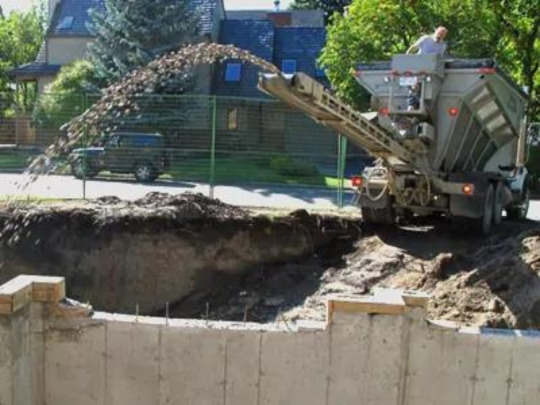
Fleet management encompasses a range of tasks, from vehicle maintenance and tracking to driver training and route optimization. By employing a comprehensive approach to our stone slinger fleet management, WeDeliverGravel.com ensures that every aspect of our operations is fine-tuned for maximum efficiency.
Regular maintenance is the cornerstone of a well-managed stone slinger fleet. Our team of skilled technicians diligently inspects and services each vehicle, ensuring they are in peak operating condition. By proactively addressing potential issues and conducting routine upkeep, we minimize downtime and prevent costly breakdowns during critical projects.
Real-time tracking technology is another invaluable tool that helps us stay on top of our game. With GPS systems installed in our stone slinger trucks, we have full visibility of their locations, allowing us to monitor their progress and make informed decisions in real-time. This enables us to provide accurate delivery time estimates to our clients in Toronto, enhancing their overall experience and allowing them to plan their projects more effectively.
Our commitment to continuous improvement extends to our drivers. We invest in comprehensive training programs that not only focus on operating the stone slinger machinery but also on safety protocols and customer service. Well-trained drivers contribute to smoother operations, fewer accidents, and increased client satisfaction.
To further enhance efficiency, WeDeliverGravel.com utilizes advanced route optimization software. By analyzing traffic patterns, road conditions, and delivery schedules, we create the most efficient routes for our stone slinger fleet. This not only saves time and fuel costs but also reduces our environmental footprint, aligning with our commitment to sustainable practices.
As a stone slinger service in Toronto, our goal is to exceed client expectations and streamline the construction and landscaping process. By employing rigorous fleet management strategies, WeDeliverGravel.com ensures that our stone slinger fleet operates at peak performance levels consistently.
In conclusion, fleet management plays a crucial role in optimizing efficiency and productivity for stone slinger services in Toronto. At WeDeliverGravel.com, we recognize the significance of well-maintained vehicles, real-time tracking, driver training, and route optimization. By fine-tuning every aspect of our stone slinger fleet, we deliver exceptional service to our clients, enhancing their project outcomes and overall experience. When you partner with WeDeliverGravel.com, you can trust that your stone slinger needs will be met with the highest level of professionalism, efficiency, and reliability.
3 notes
·
View notes
Text
Big Wings LLC: Powering the Future of Supply Chain and Logistics Services in California.

California, with its booming economy and bustling trade routes, is the nerve center of America’s logistics landscape. Whether it's the ports of Los Angeles and Long Beach or the tech corridors of Silicon Valley, efficient transportation and logistics operations are the backbone of commerce. One company that has made significant strides in this space is Big Wings LLC, a trusted name when it comes to Supply Chain Services in California.
The Growing Need for Efficient California Logistics Services As e-commerce expands, manufacturing scales, and businesses aim for faster delivery windows, the demand for seamless California logistics services has skyrocketed. Businesses today aren’t just looking for transport—they’re seeking integrated logistics solutions that can streamline inventory, reduce delays, optimize routes, and improve customer satisfaction. Big Wings LLC addresses these exact needs. With a robust network, cutting-edge technology, and a customer-first mindset, the company is redefining how California logistics and transportation services are delivered.
Why Big Wings LLC Stands Out in California’s Competitive Market:
Comprehensive Supply Chain Services in California At the core of Big Wings LLC’s operations lies a well-structured supply chain management system. From warehousing and inventory control to real-time tracking and last-mile delivery, they offer end-to-end supply chain services in California. Whether you’re a small business scaling operations or a large manufacturer with cross-state shipments, Big Wings provides scalable solutions tailored to your business needs. Their integrated software systems allow clients to manage logistics from a single dashboard, offering full transparency and actionable insights. This level of control enhances efficiency, minimizes human error, and keeps operations running smoothly—even during peak season.
Reliable and Fast California Freight Forwarding In today’s global economy, freight forwarding is more than just moving cargo—it’s about strategic coordination. Big Wings LLC offers expert California freight forwarding services that ensure your goods arrive safely and on time. Be it air freight, sea freight, or multimodal logistics, Big Wings partners with top carriers to provide reliable and cost-effective forwarding solutions. With a strong presence near major ports and airports, Big Wings helps clients navigate customs clearance, documentation, insurance, and warehousing, all under one roof.
Expertise in Logistics Services Los Angeles Los Angeles is one of the busiest logistics hubs in the United States. With constant demand for streamlined freight and transport operations, businesses in the region require partners who understand its logistical challenges. Big Wings LLC, through its deep local insights and strong ground network, provides excellent logistics services in Los Angeles, helping businesses manage both inbound and outbound shipments with precision. Whether you're in retail, manufacturing, or agriculture, Big Wings’ localized services in LA allow for quick pickups, optimized delivery routes, and reduced downtime.
Technology-Driven Solutions That Set Big Wings Apart Big Wings LLC embraces technology as a key enabler. Their fleet is equipped with GPS-enabled tracking systems, and their logistics platform integrates AI-based demand forecasting, route optimization, and predictive maintenance tools. These innovations make Big Wings one of the most future-ready California logistics services providers. This tech-forward approach not only lowers costs but also improves environmental sustainability through fuel-efficient routing and smart packaging techniques.
Trusted by Businesses Across California Big Wings LLC works with clients across diverse industries—retail, manufacturing, pharmaceuticals, food & beverage, and tech—delivering tailored logistics plans that meet sector-specific needs. They’re not just a service provider but a strategic partner helping companies scale faster and smarter. Businesses trust Big Wings not only for its infrastructure but for its commitment to customer success. Their dedicated account managers ensure smooth communication, proactive issue resolution, and round-the-clock support. Sustainability and Scalability at Its Core As environmental regulations tighten and companies grow more eco-conscious, Big Wings leads the way in green logistics. Their use of electric vehicles for local deliveries, eco-packaging options, and carbon offsetting programs reflects a deep commitment to sustainability. Moreover, their logistics infrastructure is designed for scale so whether your business is shipping ten packages or ten thousand, Big Wings has the capacity and expertise to handle it. In the ever-evolving world of California logistics and transportation, Big Wings LLC is not just keeping up it’s setting the pace. With unmatched expertise in supply chain services in California, specialized logistics services in Los Angeles, and reliable freight forwarding solutions, Big Wings is a name businesses can rely on. If you’re looking for a logistics partner that’s innovative, dependable, and future-focused, Big Wings LLC is ready to help your business soar.
#Logistics Services#Transport Logistics Services#Logistics Company In California#California Transportation Services#Supply Chain Services California
0 notes
Text
How Tax Services Handle Quarterly Estimated Taxes?

If you’re an owner-operator or fleet owner in the trucking industry, you’ve probably been blindsided by quarterly tax payments at some point. One month the cash flow’s solid, and the next, the IRS expects a chunk of change—on top of your fuel, insurance, and payroll costs. For many in the industry, the problem isn’t the payment itself—it’s the surprise.
That’s why more and more drivers are turning to a trucking tax specialist for help. These pros don’t just fill out forms; they manage your quarterly tax estimates with precision, timing, and strategy—so you can stay compliant and protect your cash flow.
Here’s how they do it—and why it can make all the difference.
1. What Are Quarterly Estimated Taxes, Anyway?
If you’re self-employed (like most truckers and fleet owners), the IRS expects you to pay taxes as you earn income—not just at the end of the year. That’s where quarterly estimated taxes come in.
Each quarter, you’re expected to send in payments for:
Federal income tax
Self-employment tax (Social Security + Medicare)
And possibly, state income tax (depending on where you operate)
Miss a deadline or underpay? You could face penalties—even if you file your annual return on time. That’s where things get tricky, especially when your income varies from season to season or job to job.
2. Getting It Right Starts With Real-Time Income Tracking
Tax services begin by setting up tools or systems to monitor your income consistently. This is especially critical in trucking, where one month can look wildly different from the next.
A good tax service will:
Sync with your bookkeeping software or bank accounts
Track income from multiple brokers or loads
Account for fuel advances or deductions from settlements
By having an up-to-date picture of your earnings, your tax specialist can calculate accurate estimates for each quarter—not just guesses based on last year.
3. Accounting for Deductions You’re Actually Using
One of the biggest mistakes drivers make is underestimating how much they can write off. A tax service doesn’t just use generic templates—they tailor deductions to your business.
Common deductions they apply toward quarterly calculations include:
Fuel and maintenance costs
Per diem meal rates
Lodging, tolls, and parking
Truck loan interest
Depreciation for your rig and equipment
By incorporating these deductions into your estimated payments, you’re not overpaying—and you avoid the cash strain of waiting for a refund.
4. Factoring in Seasonal Highs and Lows
Trucking isn’t always consistent. Whether it’s freight slowdowns in January or peak rates in the summer, income can fluctuate. A trucking tax specialist doesn’t just divide last year’s tax by four and call it a day.
Instead, they:
Look at year-to-date income
Adjust estimates based on seasonal patterns
Update calculations each quarter (rather than locking you into a static plan)
This adaptive strategy helps ensure you’re paying just enough—without hurting your budget when business slows.
5. Managing Multi-State Income and Tax Obligations
If you haul across state lines, things get more complicated. Not all states have income tax, but many do—and some require estimated payments.
Professional tax services break down:
Income earned per state (especially if you’re domiciled in one but earning in others)
Where and when you owe state taxes
How to file those payments correctly and on time
It’s a level of nuance that’s tough to manage solo, especially when your primary focus is keeping wheels turning.
6. Avoiding IRS Penalties and Surprises
Paying late or underpaying can trigger IRS penalties—even if you pay in full at the end of the year. A tax pro helps ensure:
Each payment hits the IRS on time (April, June, September, January)
Your calculations meet the safe harbor rules (usually 90% of the current year or 100% of last year’s liability)
Your documentation is audit-proof
Even small mistakes can cause big headaches. This is one area where it truly pays to get it right.
7. Helping You Budget Throughout the Year
The biggest benefit of outsourcing your estimated taxes? Predictability. When your tax pro gives you exact numbers to pay—and when to pay them—you can build that into your operating budget.
No last-minute scrambling. No overdrawn accounts. Just smooth planning.
They may even help you open a separate tax savings account, so your business and tax money don’t mix. That kind of proactive thinking is what sets professionals apart.
👉 Curious how these services tie into broader tax planning? Check out Trucking Tax Services: Year-Round Solutions for Drivers & Fleets to learn how consistent support keeps you ahead of the curve.
Conclusion: Don’t Let Quarterly Taxes Run Your Life
Quarterly estimated taxes are more than a recurring task—they’re a financial pressure point that, if mishandled, can mess up your entire year. But it doesn’t have to be that way.
With the help of a trucking tax specialist, you can stay in control. You’ll know what you owe, when you owe it, and how to minimize your liability—all without digging through spreadsheets in the middle of a long haul. From adjusting for seasonality to claiming the right deductions, tax services are your co-pilot for staying compliant without the chaos.
So if you’re ready to stop guessing and start planning, it’s time to bring in some real support. Your truck, your wallet—and your sanity—will thank you.
0 notes